
|
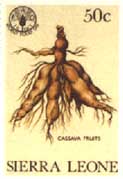
|
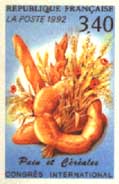
|
The world has
over 50 000 edible plants. Just three of them, rice,
maize and wheat, provide 60 percent of the world's food
energy intake.
|
The main
staple foods in the average African diet are (in terms of
energy) cereals (46 percent), roots and tubers (20
percent) and animal products (7 percent).
|
In Western
Europe the main staple foods in the average diet are (in
terms of energy) animal products (33 percent), cereals
(26 percent)
and roots and tubers (4
percent).
|
The
sources of food
Click here to see the map

Selected
food crops:
|
1. Chinese-Japanese
region
bamboo, millet, mustard, orange, peach,
rice, soybean, tea2. Indochinese-Indonesian
region
bamboo, banana, coconut, grapefruit, mango, rice,
sugar cane, yam
3. Australian region
macadamia nut
|
4. Hindustani region
banana, bean, chick-pea, citrus, cucumber, eggplant,
mango, mustard, rice, sugar cane5. Central
Asian region
apple, apricot, bean, carrot, grape, melon, onion,
pea, pear, plum, rye, spinach, walnut, wheat
6. Near Eastern region
almond, barley, fig, grape, lentil,
melon, pea, pistachio, rye, wheat
|
7. Mediterranean region
beetroot, cabbage, celery, fava bean, grape, lettuce, oats,
olive, radish, wheat8. African region
coffee, millet, oil palm, okra, sorghum,
teff, wheat, yam
9. European-Siberian region
apple, cherry, chicory, hops, lettuce, pear
|
10. South American region
cacao, cassava, groundout, lima bean, papaya,
pineapple, potato, squash, sweet potato, tomato11.
Central American and Mexican region
french bean, maize, pepper/chill), potato,
squash
12. North American region
blueberry, sunflower
Staple crops are shown in bold type
|
A staple food is one
that is eaten regularly and in such quantities as to constitute
the dominant part of the diet and supply a major proportion of
energy and nutrient needs.
A staple food does not meet a population's total nutritional
needs: a variety of foods is required. This is particularly the
case for children and other nutritionally vulnerable groups.
Typically, staple foods are well adapted to the growth
conditions in their source areas. For example, they may be
tolerant of drought, pests or soils low in nutrients. Farmers
often rely on staple crops to reduce risk and increase the
resilience of their agricultural systems.
Most people live on a diet based on one or more of the
following staples: rice, wheat, maize (corn), millet, sorghum,
roots and tubers (potatoes, cassava, yams and taro), and animal
products such as meat, milk, eggs, cheese and fish.
Of more than 50 000 edible plant species in the world, only a
few hundred contribute significantly to food supplies. Just 15
crop plants provide 90 percent of the world's food energy intake,
with three rice, maize and wheat - making up two-thirds of this.
These three are the staples of over 4 000 million people.
Although there are over 10 000 species in the Gramineae
(cereal) family, few have been widely introduced into cultivation
over the past 2 000 years. Rice feeds almost half of humanity.
Per caput rice consumption has generally remained stable, or
risen slightly since the 1960s. It has declined in recent years
in many of the wealthier rice-consuming countries, such as Japan,
the Republic of Korea and Thailand, because rising incomes have
enabled people to eat a more varied diet.
Roots and tubers are important staples for over 1 000 million
people in the developing world. They account for roughly 40
percent of the food eaten by half the population of sub-Saharan
Africa. They are high in carbohydrates, calcium and vitamin C,
but low in protein.
Per caput consumption of roots and tubers has been falling in
many countries since the beginning of the l 970s, mainly because
urban populations have found it cheaper and easier to buy
imported cereals. Since 1970, consumption of roots and tubers in
the Pacific Islands has fallen by 8 percent, while cereal
consumption jumped by 40 percent, from 61 to 85 kilograms per
person.
Many countries are experiencing a similar shift away from
traditional foods, but there is growing recognition of the
importance of traditional food crops in nutrition. After years of
being considered "poor people's foods" some of these
crops are now enjoying a comeback. Cassava, considered a minor
crop at the turn of the century, has now become one of the
developing world's most important staples providing a basic diet
for around 500 million people. Plantings are increasing faster
than for any other crop. Quinoa, a grain grown in the high Andes,
is also gaining wider acceptance even outside of Latin America
with the introduction of new varieties and improved processing.
Proportions
of food in average diets
World diets
Click here to see the map
 (289 KB) - Be careful!
(289 KB) - Be careful!
Each coloured segment indicates a
contribution of 10 percent or more to the average dietary energy
supply (DES). Other foods and any food group providing less than
10 percent to the DES is coloured grey. Because the
figures are shown as ranges and not precise numbers, segments
showing similar percentages do not always appear the same size.
Boundaries of newly formed nations (in former USSR, in former
Yugoslavia in former Czechoslovakia, Eritrea) are shown in grey.
Data for these countries not available.
Statistics for next zones (these are connected to the
previous map):
North America, Central America and
Caribbean (48 KB)
Europe and area of the former USSR
(69 KB)
Asia
(90 KB)
South America (37
KB)
Africa
(139 KB)
Southwest Pacific (20 KB)
World average diet
Percentages, 1988-90

Other
important nutritional sources - complementary foods
Throughout the world,
complementary foods play an essential role in meeting nutrient
requirements. They include protein sources - meat, poultry, fish,
legumes and milk products; energy sources - fats, oils and
sugars; and vitamin and mineral sources - fruits, vegetables and
animal products.
In addition to conventional crops and agricultural products,
the following are valuable sources of nutrition. Their importance
is particularly obvious during seasonal and emergency shortages.

Wild plants are essential for many rural subsistence
households; at least 1 000 million people are thought to use
them. In Ghana, for instance, the leaves of over 100 species of
wild plants and the fruits of another 200 - are consumed. In
rural Swaziland, more than 220 species of wild plants provide a
greater share of the diet than domesticated cultivars. In India,
Malaysia and Thailand, about 150 wild plant species have been
identified as sources of emergency food.
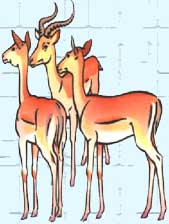
Wild animals including insects, birds, fish, rodents
and larger mammals are often the only source of animal protein
for rural people. In parts of the Peruvian Amazon, for example,
over 85 percent of dietary animal protein is from the wild. Some
62 developing countries rely on wildlife for at least one-fifth
of their animal protein.
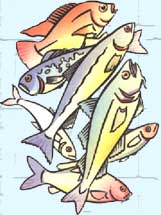
Fish supplements the rice diet of many north-eastern
Thai and Lao farming families. Both fish and frogs are caught in
streams, irrigation canals, ditches, water reservoirs and flooded
paddy fields.
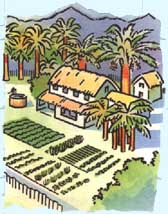
Tree foods and home gardens contribute significantly to
rural diets. In West Java, Indonesia, coconut trees and home
gardens produce 32 percent of total dietary protein and 44
percent of total calorie needs. In Puerto Rico, the produce from
home gardens has increased vitamin A and C intake, especially in
children.
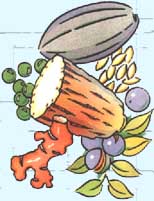
Forest foods can provide varied food year round,
supplying essential minerals and vitamins. They include: wild
leaves, seeds and nuts, fruits, roots and tubers, mushrooms,
honey and animal products.
THE WORLD'S FORGOTTEN FOODS
Some traditional food plants could become foods of the future
- a convenient source of income, improved nutrition and increased
food supply.
Amaranth and quinoa -grains that originally came from the
Andes and were holy to the Incas of Peru and the Aztecs of Mexico
- are being reevaluated. Both are versatile and nutritious. They
are also hardy: amaranth thrives in hot climates; quinoa is frost
resistant and can be grown as high as 4 000 metres.
Many more traditional foods await development and wider use.










